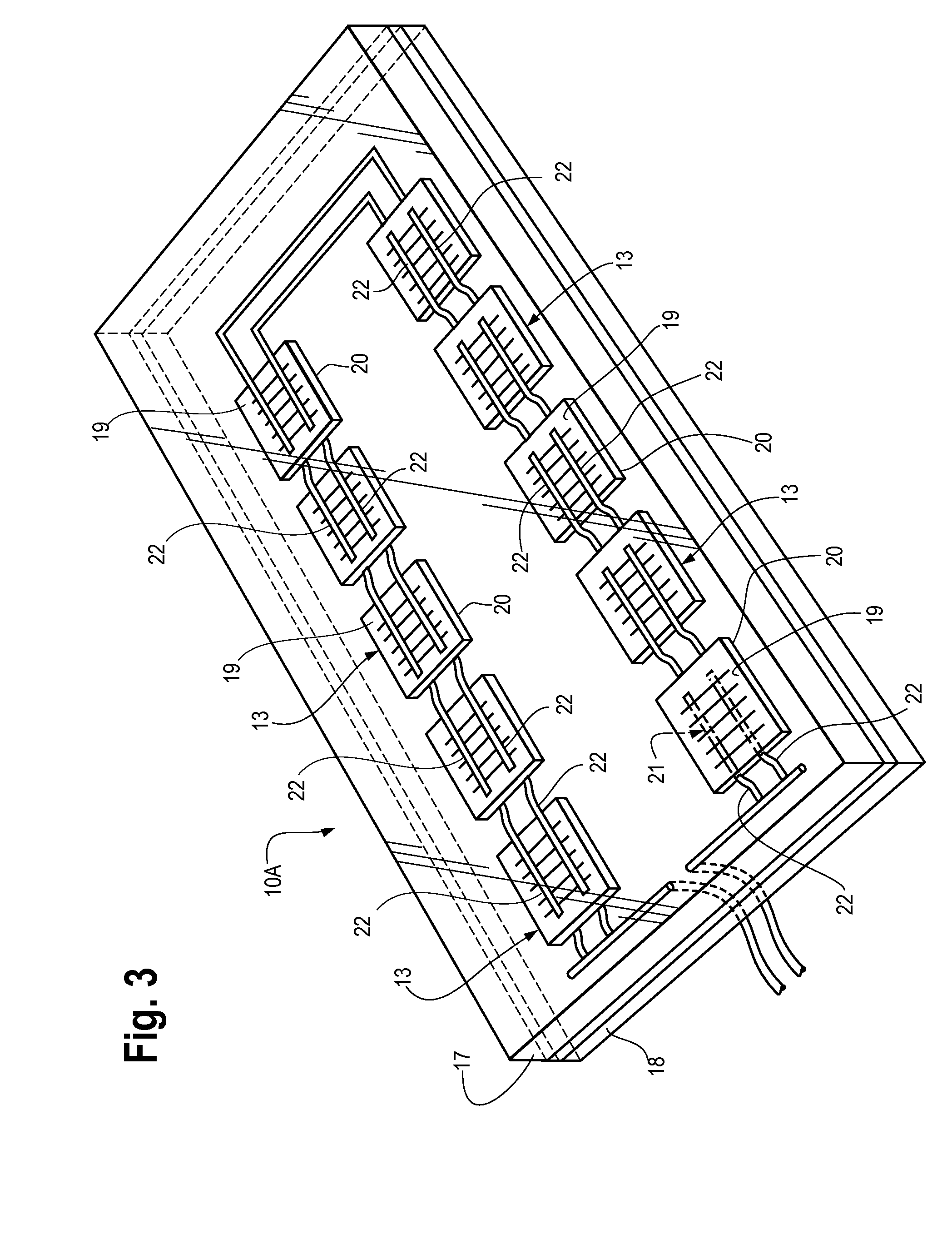Means and Method for Electrically Connecting Photovoltaic Cells in a Solar Module
a solar module and photovoltaic cell technology, applied in photovoltaic supports, climate sustainability, sustainable buildings, etc., can solve the problems of more connections, failure of connections, and end of expected useful life of solar modules, so as to reduce stress failures in the ribbon
- Summary
- Abstract
- Description
- Claims
- Application Information
AI Technical Summary
Benefits of technology
Problems solved by technology
Method used
Image
Examples
Embodiment Construction
[0019] Referring now to the drawings, FIG. 1 illustrates a typical solar array 10 incorporating the present invention which has been mounted on a support surface (e.g. roof 11 of a house or the like). Array 10 is comprised of a plurality (sixteen shown) of solar modules 12 (only some numbered) which have been secured to the roof 11 as shown. As will be fully understood in the art, a typical solar module 12 is basically formed by positioning a plurality of photovoltaic (PV) cells 13 (FIG. 2) between a sheet of a transparent material 14 (e.g. glass, plastic, etc.) and another sheet of material (not shown), whereby the finished module 12 is effectively a flat, rectangular, plate-like structure as shown in the figures.
[0020] To complete the assembly of module 12, the sandwich of PV cells 13 is typically encased within a frame 15. Typical measurements of a solar cell module 12 of this type is approximately thirty-one (31) inches wide and sixty-three (63) inches long. A suitable frame fo...
PUM
 Login to View More
Login to View More Abstract
Description
Claims
Application Information
 Login to View More
Login to View More - R&D
- Intellectual Property
- Life Sciences
- Materials
- Tech Scout
- Unparalleled Data Quality
- Higher Quality Content
- 60% Fewer Hallucinations
Browse by: Latest US Patents, China's latest patents, Technical Efficacy Thesaurus, Application Domain, Technology Topic, Popular Technical Reports.
© 2025 PatSnap. All rights reserved.Legal|Privacy policy|Modern Slavery Act Transparency Statement|Sitemap|About US| Contact US: help@patsnap.com



